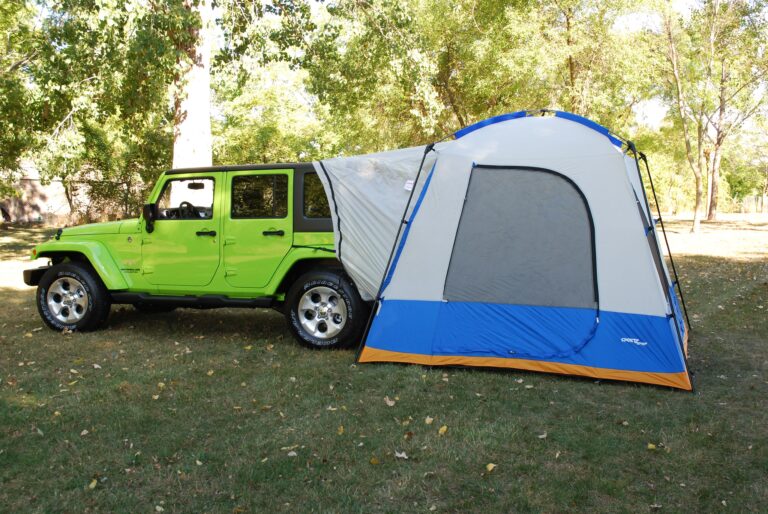1999 Jeep Cherokee 4×4 For Sale: Your Guide to Owning an American Icon
1999 Jeep Cherokee 4×4 For Sale: Your Guide to Owning an American Icon jeeps.truckstrend.com
In the vast landscape of automotive history, few vehicles achieve the legendary status of the Jeep Cherokee XJ. And within that revered lineage, the 1999 model year holds a special place, representing one of the final, most refined iterations of a true American icon. For enthusiasts, off-road adventurers, and those simply seeking a robust, no-nonsense 4×4, the prospect of a "1999 Jeep Cherokee 4×4 For Sale" isn’t just an advertisement – it’s an invitation to own a piece of automotive heritage, a vehicle celebrated for its unparalleled durability, legendary off-road capability, and a simplicity that stands in stark contrast to today’s complex machines. This comprehensive guide will delve into everything you need to know about acquiring and maintaining this remarkable vehicle, transforming a potential purchase into a well-informed investment.
The Enduring Legacy of the XJ Cherokee
1999 Jeep Cherokee 4×4 For Sale: Your Guide to Owning an American Icon
The Jeep Cherokee XJ generation, produced from 1984 to 2001, revolutionized the SUV market. Unlike its larger, body-on-frame predecessors, the XJ pioneered the unibody SUV design, blending the ruggedness of a traditional Jeep with the practicality and comfort of a family wagon. This innovative approach created a vehicle that was lighter, more agile, and surprisingly efficient for its time, yet lost none of the brand’s famed off-road prowess.
The 1999 model year is particularly significant. It falls within the latter half of the XJ’s production run, benefiting from years of refinement and minor updates, while still retaining the classic XJ aesthetics and mechanical simplicity before the more significant changes of the 2000 and 2001 models (such as the potentially problematic "0331" cylinder head, though some late 99s might have it, it’s less common). It’s a sweet spot, offering modern amenities like improved interiors and safety features introduced in the mid-90s redesign, coupled with the bulletproof 4.0-liter inline-six engine and robust drivetrain components that made the XJ famous. Its reputation as a rugged, capable, and incredibly reliable vehicle has only grown with time, making it a highly sought-after classic.
Key Features and Specifications of the 1999 Jeep Cherokee 4×4
Understanding the core components of the 1999 XJ is crucial for any prospective buyer.
- Engine: The heart of the 1999 Cherokee 4×4 is almost universally the 4.0-liter "PowerTech" High Output (HO) Inline-Six (I6) engine. Renowned for its bulletproof reliability, ample low-end torque (190 horsepower and 225 lb-ft of torque), and ease of maintenance, this engine is often cited as one of the best ever produced by Chrysler. Its longevity is legendary, with many examples exceeding 300,000 miles with proper care.
- Transmission:
- Automatic: Most 1999 models come with the Aisin-Warner AW4 4-speed automatic transmission. This unit is incredibly robust and reliable, perfectly matched to the 4.0L engine’s power band.
- Manual: While rare, some earlier 1999 models (or special orders) might feature the Aisin AX-15 5-speed manual transmission, offering a more engaging driving experience and even greater control off-road.

- Transfer Case: This is where the 4×4 magic happens, and the 1999 XJ offered two excellent options:
- Command-Trac (NP231): This part-time 4×4 system offers 2WD High, 4WD High (locked), and 4WD Low (locked). It’s incredibly strong and simple, making it ideal for serious off-roading where pavement driving in 4WD is avoided.
- Selec-Trac (NP242): A more versatile full-time system, the NP242 adds a "4WD Full-Time" mode, allowing the vehicle to be driven on pavement in 4WD for improved traction in slippery conditions (like rain or light snow), in addition to the part-time 4WD High and Low modes. For daily drivers in varied climates, the NP242 is often preferred.
- Axles:
- Front: Dana 30 (high pinion or low pinion depending on build date, but generally robust).
- Rear: Primarily the Chrysler 8.25-inch rear axle (29-spline, a strong and desirable axle) or, less commonly, the weaker Dana 35 (identifiable by a round diff cover vs. the 8.25’s octagonal cover).
- Suspension: A simple yet effective setup featuring coil springs in the front and leaf springs in the rear, providing excellent articulation for off-road obstacles while maintaining reasonable on-road manners.
- Trim Levels: Common trims include the Sport (basic, rugged), Classic (mid-range with some creature comforts), and Limited (top-tier with leather, power seats, and more amenities).
Why Buy a 1999 Jeep Cherokee 4×4 Today?
The appeal of the 1999 XJ goes beyond nostalgia; it offers tangible benefits that make it a compelling choice even in today’s market.
- Unrivaled Off-Road Prowess: Thanks to its compact size, excellent approach/departure angles, solid axles, and robust drivetrain, the XJ is an incredibly capable off-roader, even in stock form. Its abilities punch far above its weight, challenging much larger and more expensive rigs.
- Legendary Durability and Reliability: The 4.0L engine and AW4 transmission combination is a testament to engineering longevity. With basic maintenance, these vehicles are known to run for hundreds of thousands of miles, making them an excellent choice for a dependable daily driver or a weekend warrior.
- Exceptional Affordability: Compared to newer SUVs or even other classic 4x4s, the 1999 XJ offers incredible value. You get a highly capable, reliable vehicle for a fraction of the cost of a modern equivalent.
- Vast Aftermarket Support and Moddability: The XJ enjoys one of the largest and most vibrant aftermarket communities in the automotive world. From lift kits and heavy-duty bumpers to engine upgrades and interior refinements, virtually any modification you can imagine is available, allowing owners to tailor their Cherokee to their specific needs and desires.
- Simplicity of Maintenance: Unlike modern vehicles laden with complex electronics, the XJ is relatively simple to diagnose and repair. Many common maintenance tasks can be performed by a DIY enthusiast, saving on labor costs.
- Classic Appeal and Appreciating Value: The XJ’s iconic design and proven capability have cemented its status as a classic. Well-maintained examples are beginning to appreciate in value, making a purchase potentially a sound investment.
What to Look For When Buying a 1999 Jeep Cherokee 4×4 (A Detailed Buying Guide)
Finding the right 1999 Jeep Cherokee 4×4 requires a keen eye and thorough inspection. Patience is key.
- Rust, Rust, Rust: This is the XJ’s Achilles’ heel. Inspect thoroughly:
- Rocker Panels: Often the first place to go. Check for bubbling paint or soft spots.
- Floorboards: Especially under the carpets, check for wetness or holes.
- Frame Rails/Unibody: Look for corrosion along the pinch welds, front frame horns, and rear leaf spring mounts.
- Rear Quarter Panels: Behind the rear wheels, look for rust around the wheel wells.
- Underneath: Inspect the gas tank skid plate area and spare tire well.
- Doors: Check the bottoms of the doors, especially the front doors.
- Engine (4.0L I6):
- Leaks: Common areas include the rear main seal (a drip is often normal, a puddle is not), valve cover gasket, and oil pan gasket.
- Cooling System: Check the radiator for cracks, coolant reservoir for cleanliness (no oil/sludge), and hoses for brittleness. Listen for water pump noises. Overheating is a common XJ issue if not maintained.
- Exhaust Manifold: Listen for ticking noises, indicative of a cracked exhaust manifold (very common, not critical but annoying).
- Cylinder Head (0331): While less common on true 1999 models, some late 1999 builds might have the "0331" head prone to cracking between cylinders 3 & 4. Check for coolant in oil, oil in coolant, or unexplained coolant loss.
- Transmission (AW4 Automatic):
- Fluid Condition: Check the dipstick for clear, reddish fluid. Burnt smell or dark brown color indicates neglect.
- Shifting: Ensure smooth shifts through all gears, both up and down. No harsh jerks or slipping.
- Kickdown Cable: Ensure it’s connected and adjusted.
- Transfer Case (NP231/NP242):
- Engagement: Test all 2WD, 4WD High (part-time/full-time), and 4WD Low modes. Ensure it engages smoothly without grinding or excessive clunking.
- Leaks: Check the output seals.
- Suspension and Steering:
- "Death Wobble": A violent, uncontrollable shaking of the front end, usually at highway speeds. This is caused by worn steering or suspension components (track bar, ball joints, tie rod ends, control arm bushings). Test drive on a bumpy road or highway.
- Shocks and Springs: Check for leaks on shocks. Springs should not sag excessively.
- Bushings: Inspect all control arm bushings, leaf spring bushings, and sway bar bushings for cracks or deterioration.
- Electrical: Test all power windows, locks, HVAC (heating and A/C), dashboard lights, and radio.
- Interior: Check the condition of seats (cracked leather, torn fabric), headliner (sagging is common), and dashboard (cracks are very common due to sun exposure).
- Service History: Ask for maintenance records. A well-documented history is a huge plus.
- Test Drive: Listen for any unusual noises (clunks, grinding, whining). Check braking performance. Ensure the vehicle tracks straight.
Maintaining Your XJ: Tips for Longevity
Once you’ve acquired your 1999 Cherokee, proper maintenance is key to its longevity.
- Fluid Changes: Adhere to a strict schedule for engine oil, transmission fluid, transfer case fluid, and differential fluids. These are the lifeblood of your drivetrain.
- Cooling System Vigilance: The 4.0L runs hot. Keep the radiator clean, flush the coolant regularly, and inspect hoses and the water pump. Consider upgrading to an all-aluminum radiator for better cooling.
- Rust Prevention: Wash the underside regularly, especially if you live in an area with road salt. Consider undercoating or rust encapsulators.
- Greasing Components: Regularly grease universal joints and steering components.
- Address Small Issues Promptly: Don’t let minor leaks or noises escalate into major repairs. The XJ is forgiving, but not invincible.
- Use Quality Parts: While aftermarket parts are abundant, opt for reputable brands, especially for critical components.
Potential Challenges and Solutions
While the 1999 XJ is a fantastic vehicle, it’s important to be aware of its limitations and common issues.
- Fuel Economy: The 4.0L is powerful but thirsty. Expect 15-20 MPG on average. Solution: Accept it, or consider it a trade-off for reliability and capability.
- Comfort: The ride can be a bit stiff, and interior noise levels are higher than modern SUVs. Solution: Aftermarket seats, sound deadening material, and upgraded suspension components can improve comfort.
- Safety Features: Being a 1999 model, it lacks modern airbags, stability control, and advanced driver-assistance systems. Solution: Drive defensively, ensure brakes are in top condition, and consider upgrading headlights for better visibility.
- Age-Related Wear: Parts will inevitably wear out. Solution: Budget for proactive maintenance and occasional repairs. Join online XJ communities for advice and troubleshooting.
- Finding a "Good" Example: Many XJs have been neglected or heavily modified. Solution: Be patient, inspect thoroughly, and don’t be afraid to walk away from a bad deal. Consider traveling further to find a well-maintained, rust-free example.
Practical Advice and Actionable Insights
- Pre-Purchase Inspection (PPI): Always, always, always get a qualified mechanic (preferably one familiar with Jeeps) to perform a PPI before purchasing. This small investment can save you thousands.
- Budget for Immediate Needs: Even a "good" XJ will likely need some immediate attention (fluids, tune-up, minor repairs). Factor this into your budget.
- Join the Community: Online forums (like CherokeeForum.com, NAXJA.org) and Facebook groups dedicated to the XJ Cherokee are invaluable resources for advice, parts, and camaraderie.
Price Guide: 1999 Jeep Cherokee 4×4 For Sale
The price of a 1999 Jeep Cherokee 4×4 can vary significantly based on condition, mileage, trim level, modifications, and geographical location. This table provides a general guideline:
| Condition Category | Typical Mileage Range | Key Characteristics | Estimated Price Range (USD) |
|---|



